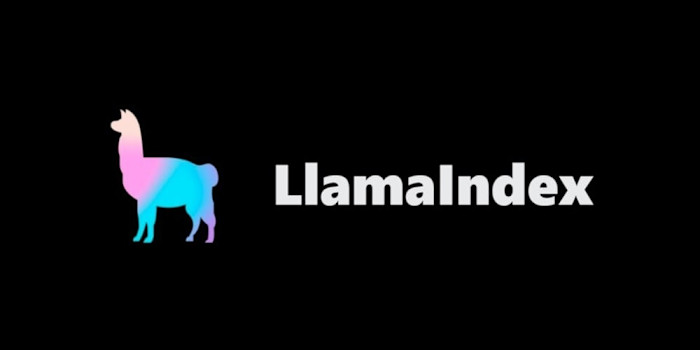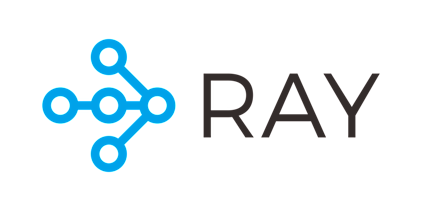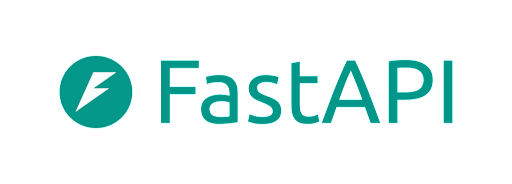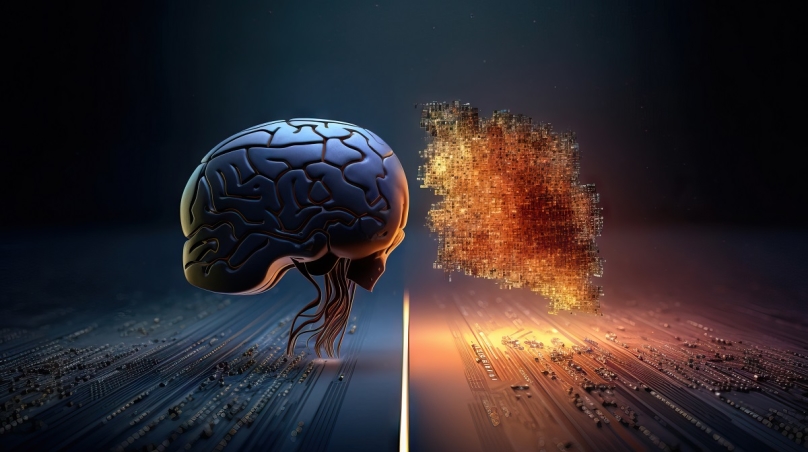Introduction
In the rapidly changing field of artificial intelligence, AI agents are emerging as transformative building blocks, similar to the influence of microservices in traditional software architecture. This development guide is aimed at navigating through the strategic steps of leveraging AI agents effectively, offering insights into how these can revolutionize modern AI applications and AI agents development by providing modular and scalable AI solutions.
AI agents break down complex AI systems into smaller, more manageable and independent components. This enables developers and organizations to implement sophisticated AI capabilities incrementally, supporting flexibility and encouraging innovation. These agents, especially when leveraging Large Language Models (LLMs), enhance not only the efficiency and adaptability of applications but also the maintainability and speed of development cycles where even one engineer can do impressive amount of work in small amount of time.
In this exploration of AI agent design, we will uncover fundamental principles, share best practices, and provide a few examples. Whether you're an experienced developer or new to the AI landscape, this guide aims to provide the critical knowledge necessary to confidently integrate AI into your developmental workflow for yourself or your employees.
Understanding AI Agent Service
Before diving into custom AI agents, it's essential to get familiar with foundational AI services. These services, often enhanced by AI generators, enable modular AI solutions that propel the development of diverse applications. They highlight key benefits like:
Independent functionality, allowing for seamless integration
Scalable and efficient processing doing complex tasks
Cost-effective maintenance and updates
AI services enable rapid prototyping and deployment of AI applications, just as microservices do for software development. They encourage a distributed approach, allowing multiple teams to work independently on various AI modules such as natural language processing, image recognition, or data analytics.
Companies Leading the AI Revolution
Google has set benchmarks with AI models such as BERT and GPT Gemini, showcasing robust frameworks to implement conversational AI solutions.
OpenAI, with its accessible LLMs, provides companies the foundation to deploy sophisticated AI agents capable of handling complex decision-making processes across various industries.
Anthropic focuses on AI safety and alignment, offering models like Claude that are designed to ensure more reliable, interpretable, and ethically sound AI systems for a range of use cases, including customer support, education, and healthcare.
Each company's contributions serve as powerful examples of how modular AI custom agents and generative AI can be implemented efficiently to solve specific problems, from understanding user semantics to predictive analytics.
Technical Implementation of AI Agents
As the development landscape evolves, implementing AI Agents has become pivotal in building resilient, scalable, and efficient AI applications. Much like microservices have revamped traditional architectures, AI agents divide complex systems into smaller, independently functioning units that can be developed and executed separately.
Leveraging Tools and Frameworks for Gen AI
A robust array of tools and frameworks exist to facilitate the seamless integration of AI agents into existing systems. Here are a few you might consider advancing your AI development:
LLM Agent-Based Modeling Frameworks: AI agents powered by large language models, frameworks like LangChain and OpenAI Function Calling are excellent for integrating autogen LLMs with external tools and APIs, enabling tasks like information retrieval and automation. For context-aware querying and efficient data handling, LlamaIndex and Haystack provide robust solutions, while Rasa and Hugging Face Transformers are ideal for developing conversational and fine-tuned AI agents. Depending on your needs—be it retrieval, integration, or multi-agent systems—these tools offer flexible and scalable options to simplify development.
Deployment Platforms: Platforms like Kubernetes facilitate the deployment, scaling, and operation of AI agents by using container orchestration to streamline workflows and enhance performance across distributed systems.
Integration Libraries: Libraries including TensorFlow and PyTorch provide pre-constructed models which can be customized for unique AI agent functionalities, reducing development time and complexity.
Custom AI Agents with LLMs
Developers can harness Large Language Models (LLMs) to create custom AI agents and personal assistant tailored to resolve industry-specific challenges. These models enable:
Enhanced Decision-Making: Utilizing the predictive capabilities of LLMs, AI agents can analyze and execute decisions based on comprehensive data inputs, thus optimizing decision-making processes.
Personalized User Interactions: Custom AI agents can leverage LLMs to interpret and respond to user semantics, providing more intuitive and personalized experiences.
Best Practices for AI Agent Development
To ensure successful AI agent implementation, developers should adhere to the following practices:
Incremental Testing and Validation: Continuously validate AI agents during development complex workflows to ensure they meet desired performance metrics before integration.
Modular Development: Design agents as modular components that can be independently updated and maintained, fostering an agile development environment.
Data Privacy and Security Protocols: Implement robust security measures when handling sensitive data within AI agent frameworks to ensure compliance with privacy laws and regulations.
With a systematic approach and the right tools, integrating AI agents within your development workflow can lead to monumental efficiencies and innovation. In the forthcoming sections, we’ll explore real-life applications and success stories illustrating how AI agents are transforming industries.
Matt Sadowski
CEO of Mobile Reality
Transform Your Business with Custom AI Agent Solutions!
Leverage our expertise in AI agent development to enhance efficiency, scalability, and innovation within your organization.
Expert development of modular and scalable AI software solutions.
Integration of Large Language Models (LLMs) for advanced capabilities.
Customized AI agents tailored to your business needs.
End-to-end support from design to deployment.
Enhance decision-making and operational efficiency with AI.
Core Advantages of AI Agent Architecture
Independent Functionality: AI agents empower developers to build smaller, autonomous services that can execute tasks concurrently. This modular approach accelerates the development of AI applications compared to monolithic AI systems by fostering component independence.
Technology Flexibility: Developers can choose the best tools, programming languages, and frameworks for their AI agent needs, whether they're integrating with TensorFlow, PyTorch, or another library, thereby optimizing their solutions per project requirements.
Scalability: With AI agents, specific functionalities within an application can be scaled independently. As demand rises in particular aspects of the system, resources can be allocated efficiently to scale those elements without affecting the entire AI service.
Isolation and Resilience: If one AI agent encounters issues, it does not disrupt the whole application. Isolation allows for targeted debugging and ensures issues are confined and managed without propagating through the system.
Reusability and Sharing: Code for AI agents can be reused or shared across different areas of an application or even between teams, ensuring consistency and reducing redundancy, especially for common processes or logic modules.
Enhanced Testing: Smaller, distinct AI agents facilitate easier runtime testing and validation, resulting in improved code quality and more stable AI applications.
Rapid Evolution: AI agents can be iteratively developed and deployed with minimal impact on the entire application, enabling faster turnarounds and continual improvements.
Optimized User Experience: By optimizing specific AI agents for distinct tasks, user interactions can be refined, offering tailored experiences that are responsive and efficient.
Team Autonomy: Decentralized development allows teams to work on discrete AI agents independently, fostering a sense of ownership and flexibility.
Simplified Maintenance: Maintaining smaller, focused codebases reduces complexity, aiding swift troubleshooting and updates.
Gradual Transformation: AI agents enable a gradual shift from monolithic systems to service-based architectures. Teams can start by developing AI agents for new capabilities and progressively refactor existing components.
Integrated Ecosystem: AI agents contribute to a more coherent application ecosystem, especially beneficial for extensive and intricate AI systems.
Streamlined Build Processes: Smaller AI agents usually result in quicker build times, boosting productivity and efficiency among developers.
Example: Building AI Agents in JavaScript
Building LLM AI agents in JavaScript typically involves integrating with a large language model (LLM) API, such as OpenAI's GPT or another similar service. Below is an example of how to build a simple LLM-based AI agent using JavaScript and Node.js.
1. Setup
Make sure you have Node.js installed, and create a project:
mkdir llm-ai-agent cd llm-ai-agent npm init -y npm install axios dotenv
2. Project structure
Here is our index.html:
llm-chat-ai-agent/ ├── index.js ├── .env └── package.json
3. Integrating with an API
Use the OpenAI API as an example. Place your OpenAI API key in the .env file:
OPENAI_API_KEY=your_openai_api_key
4. Code Example: chatbot index.js
require('dotenv').config(); const axios = require('axios'); // LLM Agent class class LLM_AI_Agent { constructor(apiKey) { this.apiKey = apiKey; this.apiUrl = "https://api.openai.com/v1/chat/completions"; } async sendMessage(messages) { try { const response = await axios.post( this.apiUrl, { model: "gpt-4", // You can use 'gpt-3.5-turbo' for a lighter model messages, }, { headers: { "Content-Type": "application/json", Authorization: `Bearer ${this.apiKey}`, }, } ); return response.data.choices[0].message.content; } catch (error) { console.error("Error communicating with the API:", error.response?.data || error.message); throw new Error("Failed to get a response from the LLM API."); } } }
// Example usage (async () => { const agent = new LLM_AI_Agent(process.env.OPENAI_API_KEY); const messages = [ { role: "system", content: "You are a helpful assistant that solves math problems." }, { role: "user", content: "What is 5 + 7?" }, ]; try { const response = await agent.sendMessage(messages); console.log("AI Agent Response:", response); } catch (error) { console.error("Error:", error.message); } })();
5. Run the Agent
node index.js
6. Output
When run, this agent will use the OpenAI API to respond to the user’s query:
AI Agent Response: 5 + 7 equals 12.
Tools for Building LLM AI Agents
AI Agents are revolutionizing how developers create modular, scalable, and efficient AI services. With the right frameworks, these agents can be effectively developed and integrated into diverse applications. Below are key frameworks that facilitate the creation and management of Custom LLM AI Agents, lending developers the tools needed for scalable AI applications.
LangChain

Figure 1 | LangChain Logo| Source: LangChain
Provides tools for chaining LLM calls together with memory, tools, and custom workflows.
Focuses on agent and chatbot development.
Includes integrations with APIs, databases, and other tools.
LlamaIndex

Figure 2 | LlamaIndex Logo| Source: LlamaIndex
Focused on creating knowledge bases for LLMs by connecting and managing external data sources.
Works well with large databases, PDFs, and APIs for dynamic data queries.
Haystack

Figure 3 | haystack Logo| Source: haystack
An open-source framework for creating NLP-powered applications.
Supports LLMs for retrieval-augmented generation and conversational agents.
OpenAI GPT API

Figure 4 | Chat GPT Logo | Source: Chat GPT
Direct access to OpenAI models like GPT-4.
Easily integrates with Python or other languages for conversational AI and decision-making agents.
Hugging Face Transformers

Figure 5 | Hugging Face Logo | Source: Hugging Face
Offers state-of-the-art pre-trained LLMs.
Extensive library for fine-tuning models and creating custom NLP applications.
For Agent Execution and Orchestration we have:
Ray Serve

Figure 6 | Ray Serve Logo | Source: Ray Serve
Scales Python AI applications, including LLM-based agents, across multiple nodes.
Optimized for deploying complex agent workflows.
FastAPI

Figure 7 | Fast API Logo | Source: Fast API
Lightweight and high-performance framework for serving LLM agents as APIs.
Pinecone or Weaviate

Figure 8 | Pinecone Logo | Source: Pinecone
Vector databases for similarity search and retrieval-augmented generation (RAG).
Crucial for embedding-based lookups in agents.
For Experimentation & Debugging we have:
PromptLayer

Figure 9 | PromptLayer Logo | Source: PromptLayer
Tracks and analyzes prompts sent to LLMs.
Useful for debugging and improving agent responses.
Gradio

Figure 10 | Gradio Logo | Source: Gradio
Quickly build interactive UIs for agent prototypes.
LangChain Debugging Tools
Built-in visualization tools for agent workflows and debugging.
Building LLM-based AI agents requires a blend of robust frameworks, reliable infrastructure, and integration tools to bring your ideas to life. Whether you're prototyping a conversational assistant, building autonomous agents, or scaling enterprise solutions, these tools provide a comprehensive foundation.
Start with frameworks like LangChain or Hugging Face for rapid development, use vector databases like Pinecone for memory and context management, and rely on platforms like AWS or Hugging Face Spaces for deployment. As the ecosystem evolves, leveraging these tools ensures you stay ahead in creating intelligent, scalable, and efficient AI agents tailored to your needs
Empowering Applications with Vision LLM tools
Integrating Vision LLM (Large Language Models) tools into applications is transforming the way they interpret and interact with visual data. By leveraging the power of machine learning, these tools enable applications to process and understand images, videos, and other visual content in a contextually intelligent manner. From automating image classification and enhancing object detection to generating detailed descriptions and even interpreting complex scenes, Vision LLMs are unlocking new possibilities. These capabilities empower developers to create more intuitive, efficient, and accessible applications across industries such as healthcare, security, retail, and entertainment, driving innovations that once seemed beyond reach.
Here’s a list of popular Vision LLM tools currently available:
OpenAI CLIP – A model designed to understand images in conjunction with text, enabling applications to match images with relevant descriptions and vice versa.
Google Vision AI – A suite of machine learning models that offers image recognition, object detection, and text extraction capabilities. It is used in a wide range of applications from automating content moderation to enhancing search functionalities.
Microsoft Azure Computer Vision – Offers tools for extracting information from images, recognizing objects, and analyzing visual content. It includes features like OCR (optical character recognition) and scene understanding.
DeepAI Image Recognition – Provides an easy-to-use API that integrates deep learning models for image classification, object recognition, and scene detection.
TensorFlow Object Detection API – A powerful tool for detecting and labeling objects in images or video streams, commonly used for building custom computer vision solutions.
Hugging Face Vision Transformers (ViTs) – A library providing pre-trained models for tasks like image classification and segmentation. Hugging Face integrates these models for a range of NLP and vision-based applications.
Meta’s DINOv2 – An unsupervised vision model that can be used for tasks such as self-supervised learning, improving visual representation understanding.
Clarifai – A platform offering tools for visual recognition, automated tagging, and content moderation with pre-trained and customizable models.
VGG Image Annotator (VIA) – A lightweight and easy-to-use tool for image annotation, which supports tasks such as object localization and segmentation.
IBM Watson Visual Recognition – A comprehensive tool for analyzing images and videos, offering both pre-trained models and the ability to train custom visual recognition models.
These tools are designed to accelerate the integration of computer vision into applications, enabling businesses and developers to quickly harness the power of visual intelligence in their products and services.
Development Tools and Best Practices
Collaborative Model Platforms
Platforms like Hugging Face give developers access to a rich library of pre-trained models, enabling them to experiment with and rapidly implement AI solutions and reliable agents. Leveraging community resources ensures that models remain up-to-date with the latest advances.
Framework Adaptability
Integrating adaptable frameworks such as OpenAI GPT ensures that AI agents remain versatile and ready to tackle a range of tasks, from natural language processing to predictive analytics. This adaptability is key to maintaining the relevance of AI applications to other agents.
Navigating the Complex AI Agent Ecosystem
Creating AI agents using advanced AI services offers unparalleled opportunities for developers envisioning Custom AI Agents. Leveraging Large Language Models (LLMs) to build AI applications can propel innovation, yet it introduces certain complexities. Here, we examine some challenges developers may face when integrating AI agents into existing systems.
Key Challenges in AI Agent Implementation
Complexity Management: Deploying AI agents involves handling multifaceted algorithms and models, which could increase the complexity of applications. Development teams may encounter difficulties in ensuring compatibility and seamless interaction between different AI services and existing system architectures.
Consistency Across Services: As developers work with a variety of AI applications, maintaining a consistent user experience becomes crucial. This includes unified responses and seamless interactions, requiring a concerted effort to ensure that AI agents align with the global application experience.
Coordinated Communication: Like microfrontends, communication between different AI modules necessitates careful orchestration. Understanding and executing data exchanges effectively is vital for functionality in areas like natural language processing and context recognition.
Dependency Coordination: Utilizing LLMs and other libraries brings dependency management challenges. Identifying common libraries and resolving potential conflicts due to library updates is essential yet can be daunting.
Comprehensive Testing: Testing AI systems demands rigorous attention to detail, ensuring the AI agent can handle various input scenarios accurately. With different environments involved, managing dependencies across testing frameworks is complex but necessary to guarantee reliability.
Routing Logical Pathways: Developing AI agents that process and direct varied information paths correctly is critical, ensuring logical continuity within applications where LLM-based decision-making is core.
Debugging Complexity: Identifying and resolving issues across multiple AI modules can be arduous. Advanced error tracking and management tools become indispensable in maintaining system integrity.
Streamlined Deployment: With AI applications, deploying updates needs to be strategic, minimizing downtime and ensuring backward compatibility. Remote AI services pose additional layers of considerations during updates.
Collaborative Development: Similar to working with microfrontends, teams must synchronize efforts across various AI initiatives, maintaining standardization and improving efficiency in partnerships.
Knowledge Dissemination: Training new team members in AI development involves imparting expertise on both the tools used and the intricacies of AI services, fostering a thorough understanding of the architecture and communication strategies between AI models.
Tool-Related Challenges in AI Development
Additionally, challenges pertaining to AI development tools may arise. Integrating AI capabilities seamlessly into current platforms requires tools that can handle this task efficiently. However, certain tool limitations while agent interaction, including those related to model deployment and the dynamic environment of AI libraries, must be considered. Keeping pace with technology advancements and ensuring thorough understanding within development teams is crucial.
Summary
In conclusion, integrating AI agents into your business can significantly enhance efficiency, productivity, and decision-making in your dynamic systems . By automating routine tasks, personalizing customer interactions, and providing real-time insights, AI agents empower organizations to stay ahead in an increasingly competitive landscape. However, to fully harness their potential, businesses must carefully consider the right implementation strategies, invest in employee training, and ensure ethical AI practices. When leveraged as responsible AI and effectively , AI agents can become a transformative asset, driving innovation and growth across various industries. Embrace this technology today, and unlock the full potential of AI in revolutionizing your business operations.
Discover more on AI-based applications and genAI enhancements
Artificial intelligence is revolutionizing how applications are built, enhancing user experiences, and driving business innovation. At Mobile Reality, we explore the latest advancements in AI-based applications and generative AI enhancements to keep you informed. Check out our in-depth articles covering key trends, development strategies, and real-world use cases:
- AI on a Budget: Understanding the Costs of AI Applications
- The Role of AI in the Future of Software Engineering
- Data Science vs Machine Learning : What's the Difference?
- Generative AI in software development
- Mastering Automated Lead Generation for Business Success
- Scale Business with AI Arbitrage Agency's Solutions
- Generate AI Social Media Posts for Free!
Our insights are designed to help you navigate the complexities of AI-driven development, whether integrating AI into existing applications or building cutting-edge AI-powered solutions from scratch. Stay ahead of the curve with our expert analysis and practical guidance. If you need personalized advice on leveraging AI for your business, reach out to our team—we’re here to support your journey into the future of AI-driven innovation.





